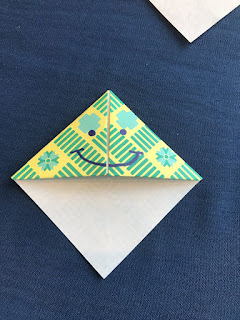QR Codes: With so many
students having access to a camera, be it on their smartphones, tablets, or Chromebooks,
QR Codes have become increasingly popular in the educational setting. Simply
scanning the small, square image allows students access to web-based text,
maps, videos, or other useful information and tools. Two ways in which I feel
QR Codes could be used in the library are with promotional materials and book
connections.
1. Promotional Materials: Bookmarks,
fliers, and posters are just a few of the places librarians can place QR codes.
The codes can link to the library website, program calendar, electronic
databases, or other important resources.
2. Book
Connections: In placing QR Codes on book covers or on posters
on book displays, students could have access to book summaries, author
interviews, and book trailers. Librarians could also use QR Codes to link books
with read-alikes, such as, “If you liked ______, then check out these other
books” as a way to promote other books in the library.
I created the QR Code below for the library website we
were asked to create.

Technology/Maker Exploration: The following nine
technologies will be addressed further at the Summer Institute next week, which
is definitely a good thing because I know very little about them. In doing some
quick research to get a better understanding of the technologies, I have realized
that every one of these technologies, while different, would be a great way to
introduce students to programming in an educational setting.
1. Ozobots are little toy robots that integrates the
physical and digital worlds.
2. Spheros are small spherical robots that roll
around through the use of Bluetooth, can spin, flip, and change color.
a. While
I understand Spheros are able to be used through Bluetooth on a mobile device, how
do they actually work, especially since much of the research I did showed them
being used by preschoolers and kindergarteners?
b. What
happens when the Sphero gets wet, either from water or paint?
c. How
difficult are they to use, especially in regards to younger children?
3. Makey-Makey is a small invention that allows the
user to turn everyday objects into a touchpad that interacts with a computer
program.
4. Little Bits Kits teach coding principles as
students build and program games.
5. Google Expeditions is a virtual-reality teaching
tool that allows educators to take their classes on virtual field trips. (How
had I never heard of this before???)
a. What
is needed to use Google Expeditions, beyond a computer?
b. Are
there pre-set expeditions, or do teachers need to create their own?
c. How
can educators ensure that students stay in the specified “location” without
straying elsewhere?
6. Paper Circuits are working circuits on paper
that are made with normal, everyday objects. Students can utilize paper
circuits to help enhance their book projects. To an elementary-aged student, I
think they would find it amazing that simple household items, when combined,
can create a working light circuit to add pizzazz to their projects.
7. Aurasma allows users to create or view augmented
reality experiences that blend the physical and digital using a mobile device's
camera.
a. How
does Aurasma benefit student learning?
b. What
are some of the benefits of using Aurasma over other augmented reality
experience apps?
c. How
can Aurasma engage students?
8. Green Screens, just like in Hollywood, allow
students to be part of their assignment.
9. Creating memes with the photo editing app Aviary
could allow students to create memes in response to current events.














